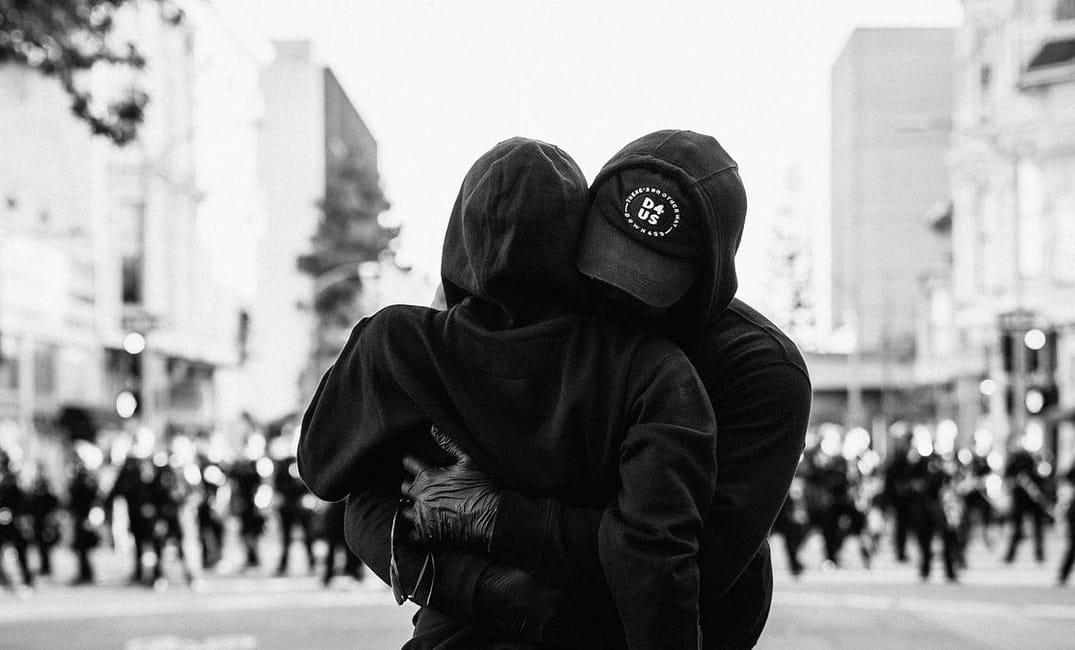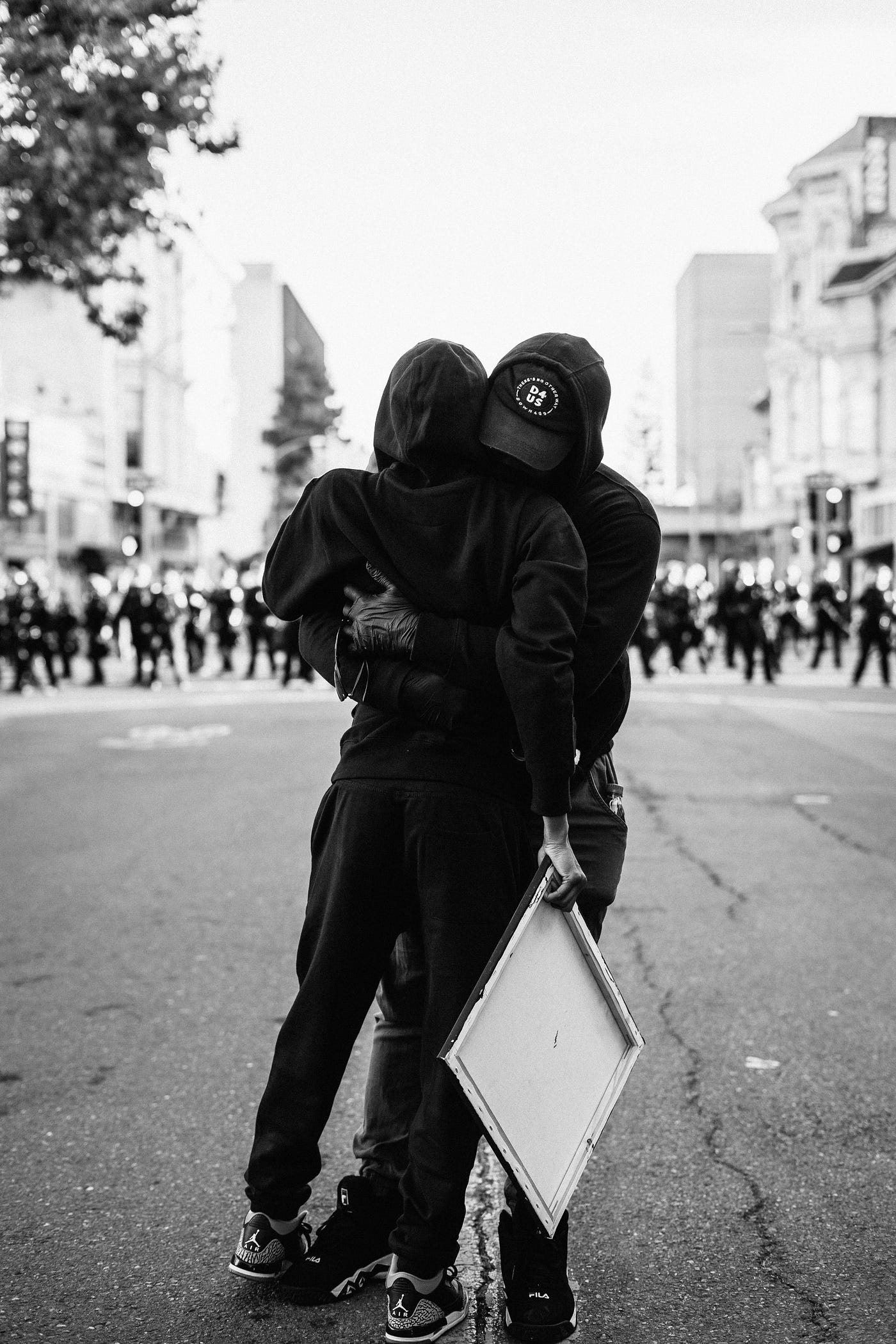
A few days ago, I did what I said I would no longer do: I engaged in a conversation in which I found myself explaining the Black experience, systemic racism, and the complex, brutal, and sometimes very subtle nature of oppression.
This conversation turned into a debate. That debate made the temperature in my blood head toward a boiling point. This isn’t new—the conversation; the feeling in my blood; the fact that a horrific (on camera) murder of a Black man, George Floyd this time, sparked the exchange. And certainly not the sense of exhaustion or mound of despair finding its way from my gut up to the back of my throat.
I’ve been here many times before, and because of that, there was a rule — a rule I broke the moment I thought sharing the truth of my trauma would convince five generations of someone else’s truth to move gracefully toward understanding mine.
Sign-up for The Bold Italic newsletter to get the best content about life in the Bay Area in your inbox every week.
This person told me that systemic racism doesn’t exist, that Black people are not oppressed in America, that white people are more common victims of hate crimes and racism. I was told that all the topics were merely excuses, and that they are bullshit. In essence, I was told that my lifetime of experience, trauma, pain, and fury is all… bullshit. The denial of my life and so many others who had come before me was demoralizing, infuriating, and numbing.
I left the conversation angry, and in that moment, I lost hope—yet again. When this flame of hope flickers, the darkness of despair appears. Even if for just a moment, that despair swallows the light like a black hole, and that black hole devours chunks of you even before you find yourself all the way inside of it.
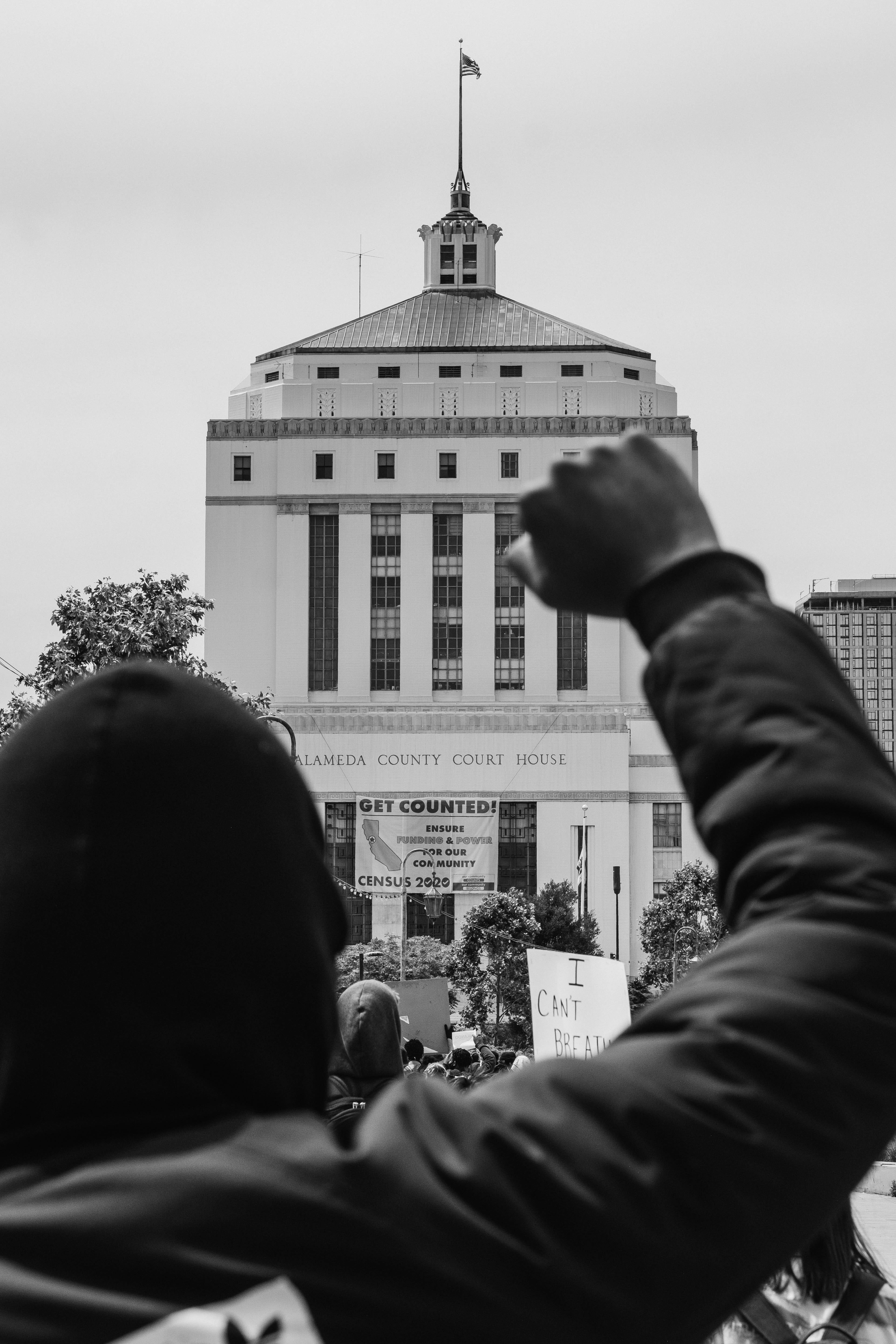

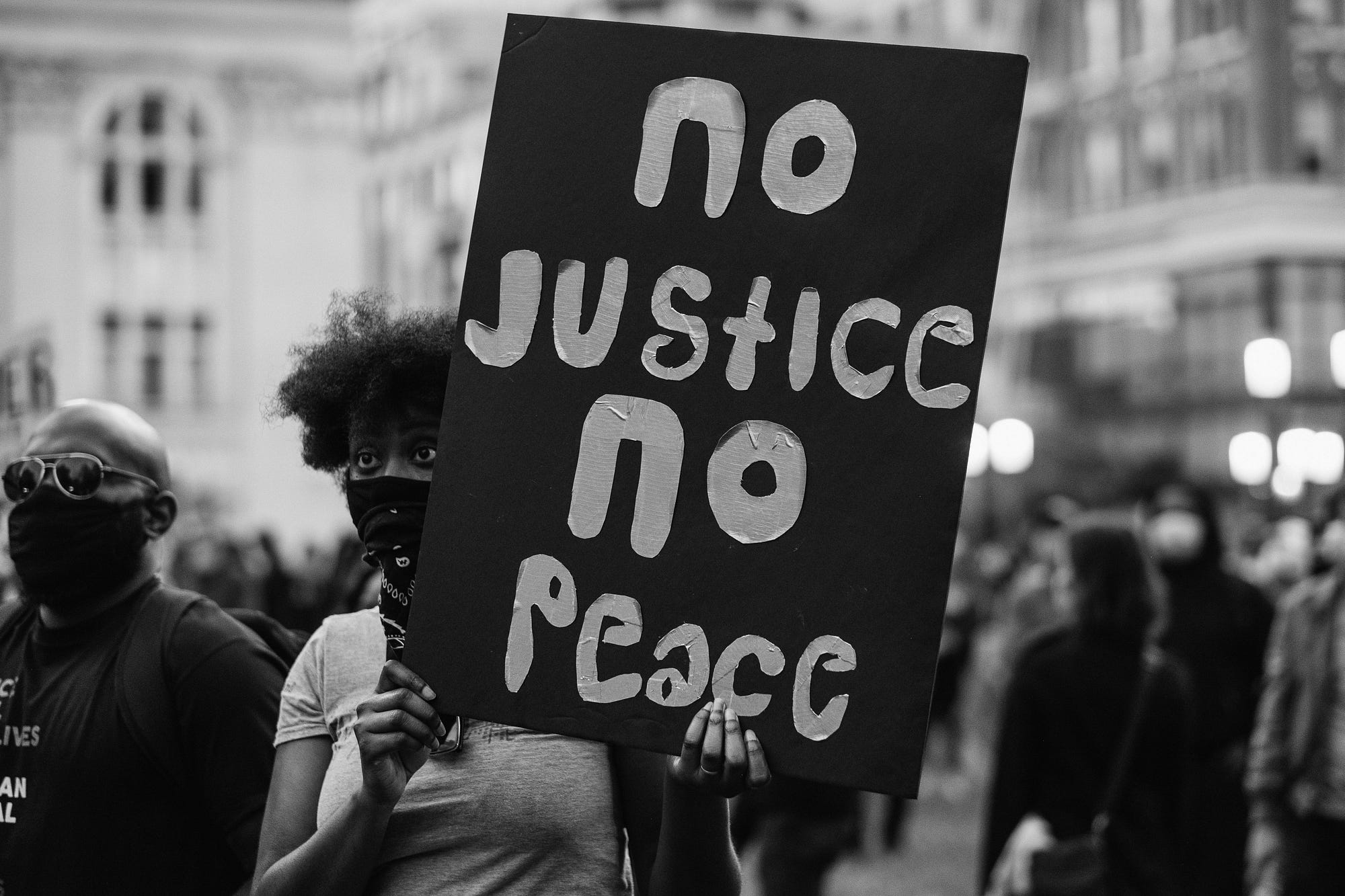
I know America is full of opinions diametrically opposed to my freedom to live. It is home to “pull yourself up by your bootstraps” types, “all lives matter” types, “don’t ever disrespect the flag” types.There is an intense irony to a country forged in the flame of protest and rebellion that so many of its citizens hate those ideologies at play when they threaten the structures that benefit them.
In recent weeks, my flame of hope hasn’t stopped flickering, back and forth, brighter, then dimmer. One moment, I find myself overcome with exhaustion, ready to burn out. The next, it is shining brighter than it has in years, as I find hope in a moment that could bring real change.
After this conversation, the wick that my flame of hope danced ferociously on grew low and closer to the ridge. I feared it would die out entirely.
Afterward, I reluctantly made my way over to a protest in Oakland. It was by far the largest gathering I had seen in my life, thousands upon thousands of people showing up to make their voices heard and demand change. As I made my way through the crowd and waited for the organizers to speak, I saw every type of person you could imagine: Black and white, women and men, old and young, rich and poor, gay and straight, and everything in between. They were the melting pot boiling together to form the blend of people we call America.

My sense of hope began to feel restored. Their presence and energy screamed, “We hear you. We believe you. We stand with you.” We want change. Everything I had been denied in my morning conversation.
There was something in the air, something in the people, in their hearts, their smiles. There was something in me.
The sentiments, even if just for a moment, representing what all this fight is for. I saw the intoxicating vision of the American dream, and until the sun set, I wholeheartedly believed in it. I saw the faces and the spirits of the people who were committed to fighting to make that dream a reality. The darkness of my despair was sparingly rinsed with the light of hope.
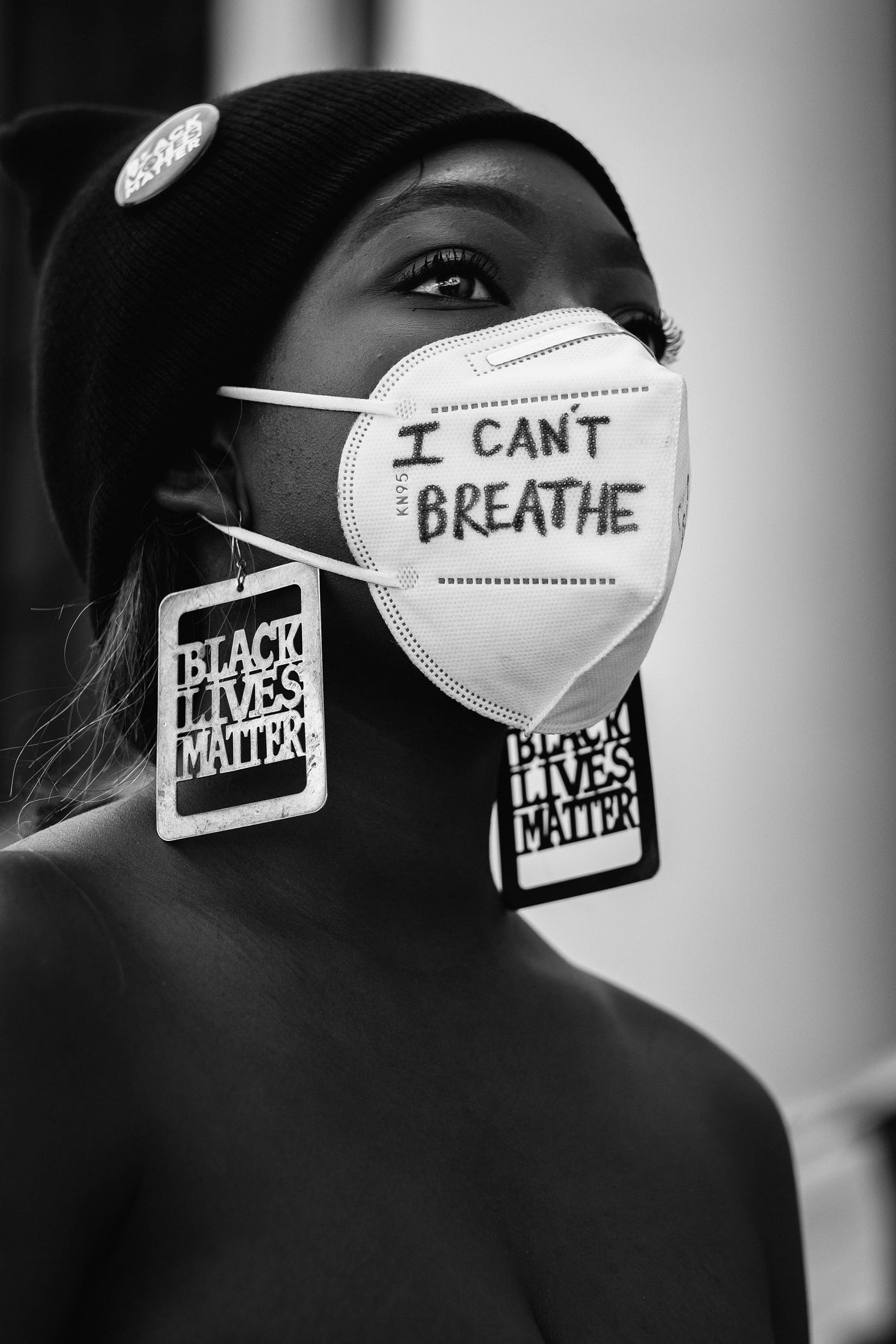
A flicker — that light, that faint light that was mine—was stronger until about the age of six. It’s an age when many of us begin to look harshly upon our own reflections in the mirror, our shades of brown, our thick hair, lips, and wide noses, all thanks to our fellow countrymen’s version of the American dream. Before I felt like a fool for believing that “liberty and justice for all” included me and my all.
The constant back and forth—this relationship of being hopeful and then having that hope crushed—is exhausting.So often I’ve questioned, “What have we done to this world to deserve so much venom, so much hate?”
I remember experiencing rage and disgust at the murder of Treyvon Martin — that this adult man, George Zimmerman, stalked a 17-year-old child, assaulted him, and ultimately shot him to death. Then, a brief glimmer of hope when Zimmerman was finally arrested and the fact that this case was so obvious the justice system could have no other choice but to deliver justice, something we are used to being denied. But then Zimmerman was found not guilty in that courtroom, and the blow of despair was crushing. In the weeks when the trial took place, the Black community was given hope, only to have it viciously snatched away. A reminder that our lives were expendable — that justice has a scale, and that Black lives didn’t weigh very heavily on it.
Here we are again. Hopeful, but terrified of it being crushed.
That moment at the recent protest in Oakland, though, I tried to lean into it. It was freeing. It was restorative.
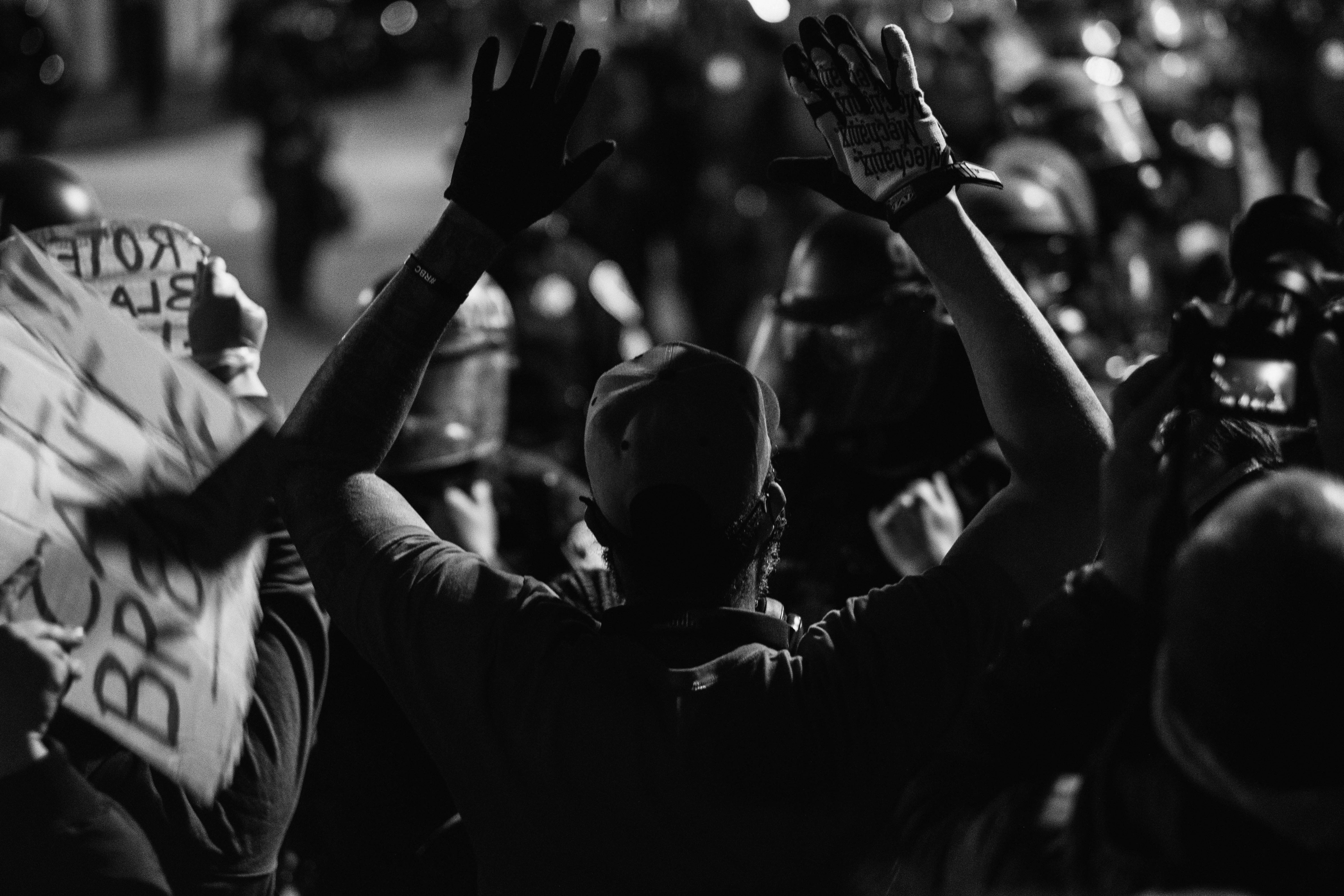
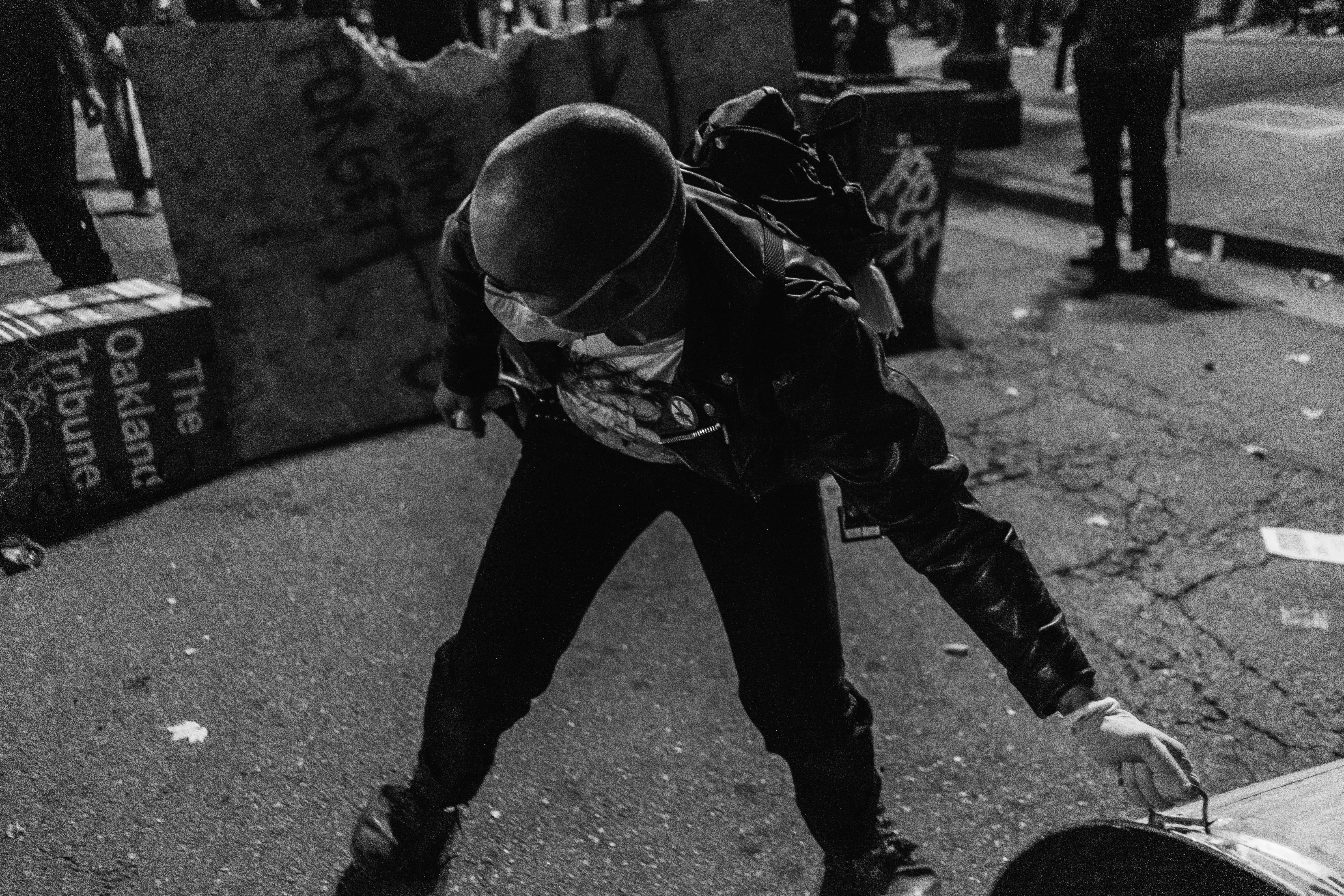
But then, as it always does, the sun went down and the light dimmed. The moon was accompanied by the sounds of explosions, the sting of tear gas soaking into my skin and eyes, the division of barricades both physical and spiritual, the venom of insults, and the sincerity of rage, all back for their nocturnal dance of chaos.
I gripped my camera tightly, raised my mask over my face, and snapped a photo of a protestor, then one of a police officer. I took photos of the stunning agony that is humanity. I took a picture of America and retrieved something that exists between the flickers of hope, rage, and despair.
I took a photo of change.
Read more like this:



